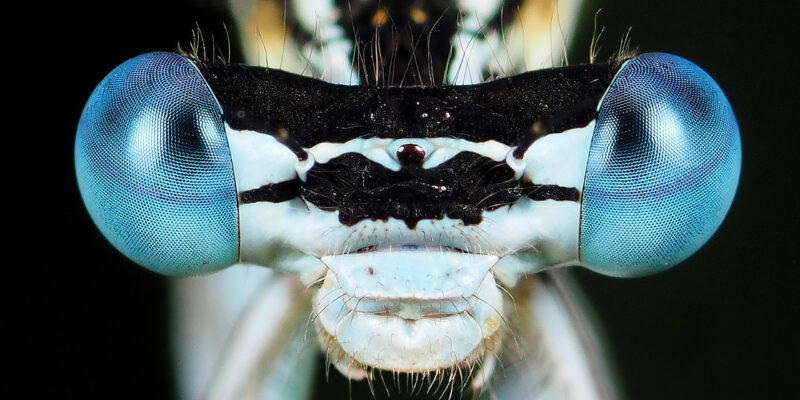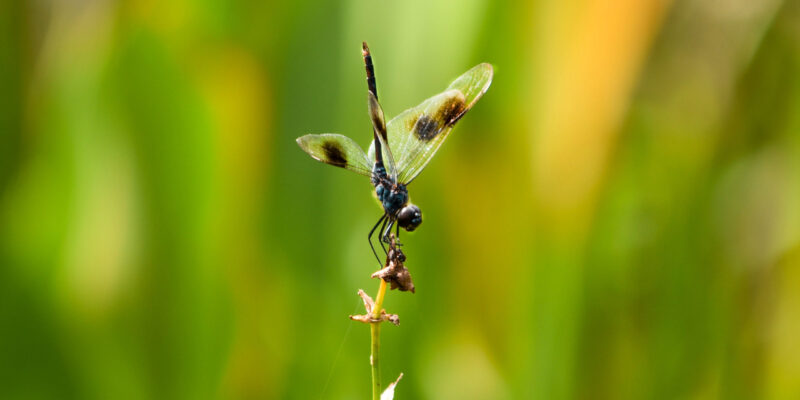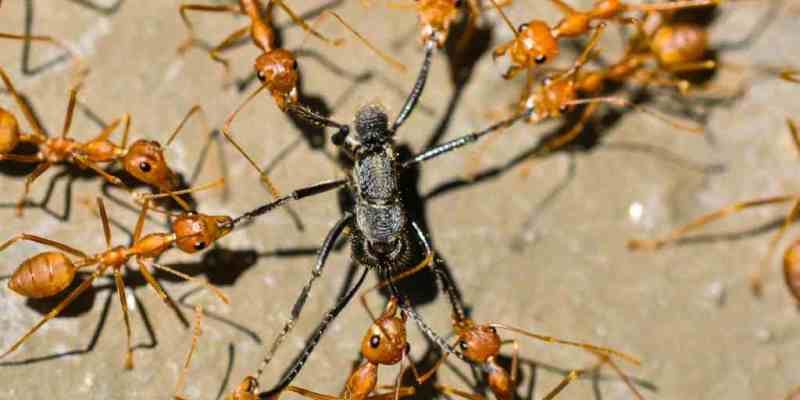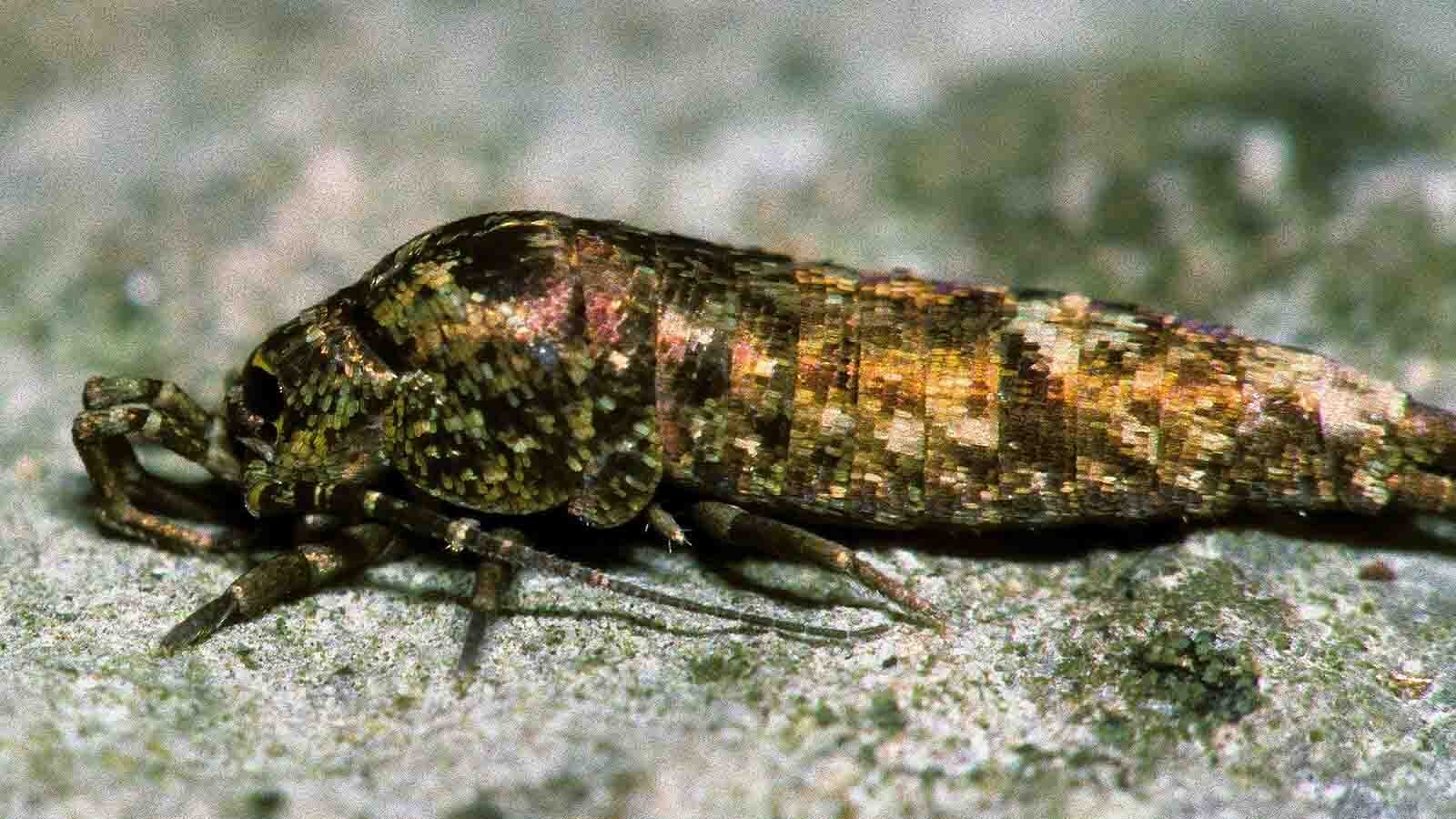
Bristletails
The Archaeognatha are active, cylindrical insects up to 18 mm long, with long flagellate antennae, and the abdomen bears a long terminal filament flanked by a pair of cerci, giving a three-tailed appearance.
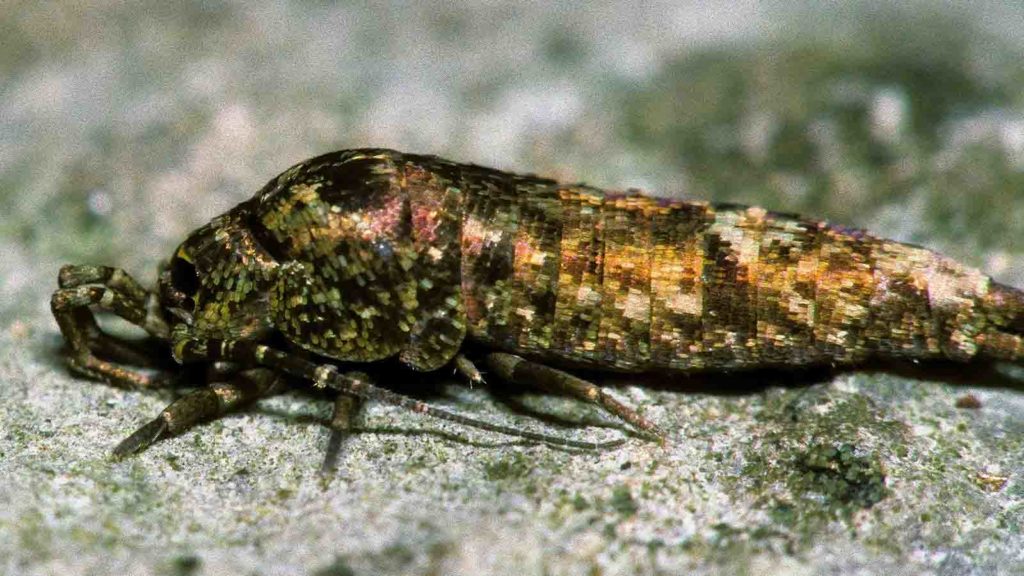
The ectognathous mouthparts are notable for the seven-segmented maxillary palps, which are longer than the legs. Much of the body is covered with flat scales, including the caudal appendages, giving the bristletails a shiny appearance. They have a well-developed pair of eyes, which are conspicuous by being positioned dorsally on the head and touching in the mid-line; there are also three ocelli, the lateral ones being below the main eyes.
As well as running, the bristletails also have the ability to jump several centimetres into the air, probably to avoid predators. Although sometimes found in leaf litter and detritus, the members of this group often live under or among stones and the genus Petrobius is particularly well-known for living on the seashore; they probably feed mainly on algae and lichens.
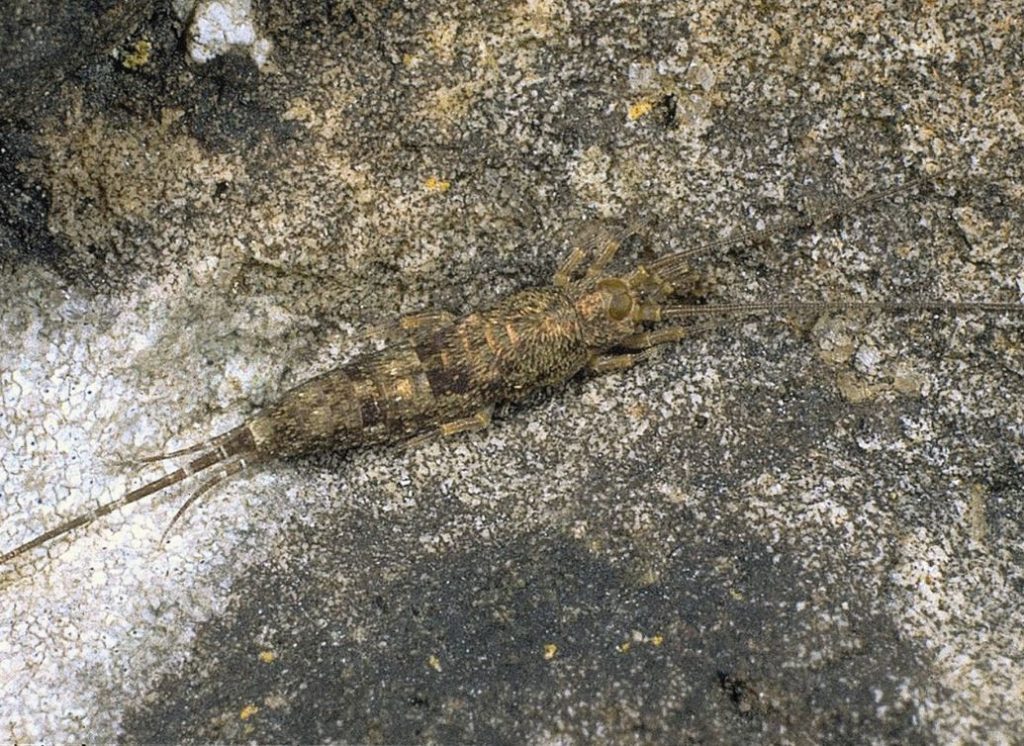
Worldwide there are around 500 known species in 2 families; in Britain there are 7 species in 1 family.
Identification help

